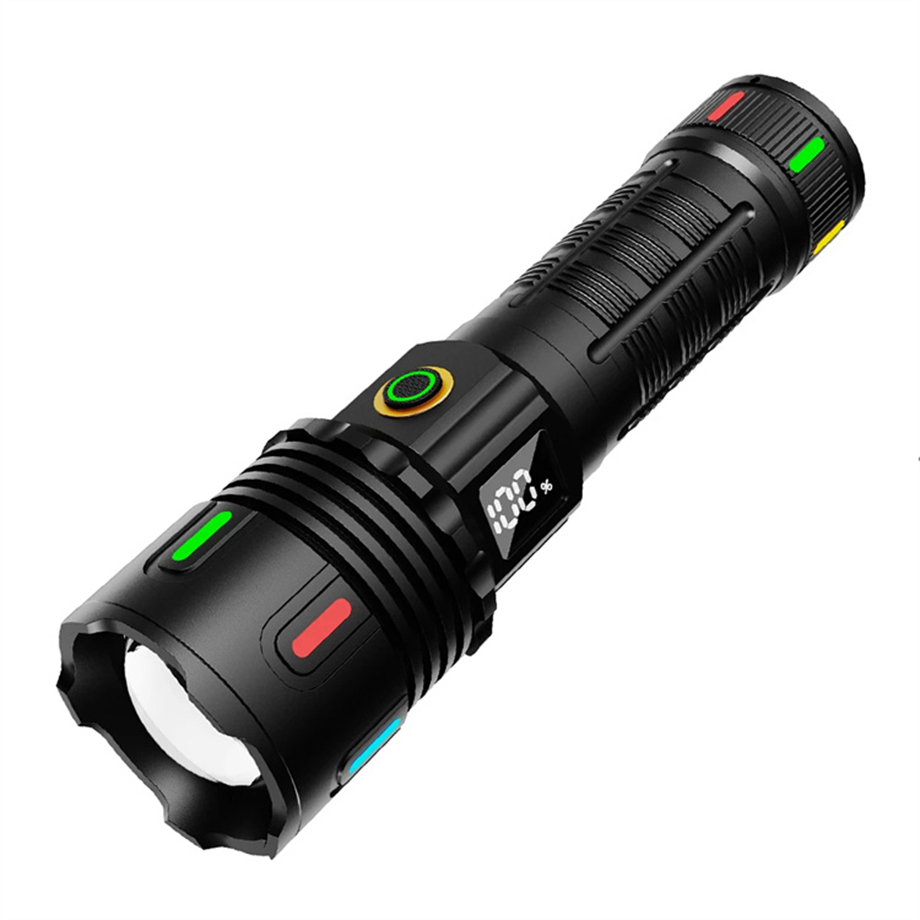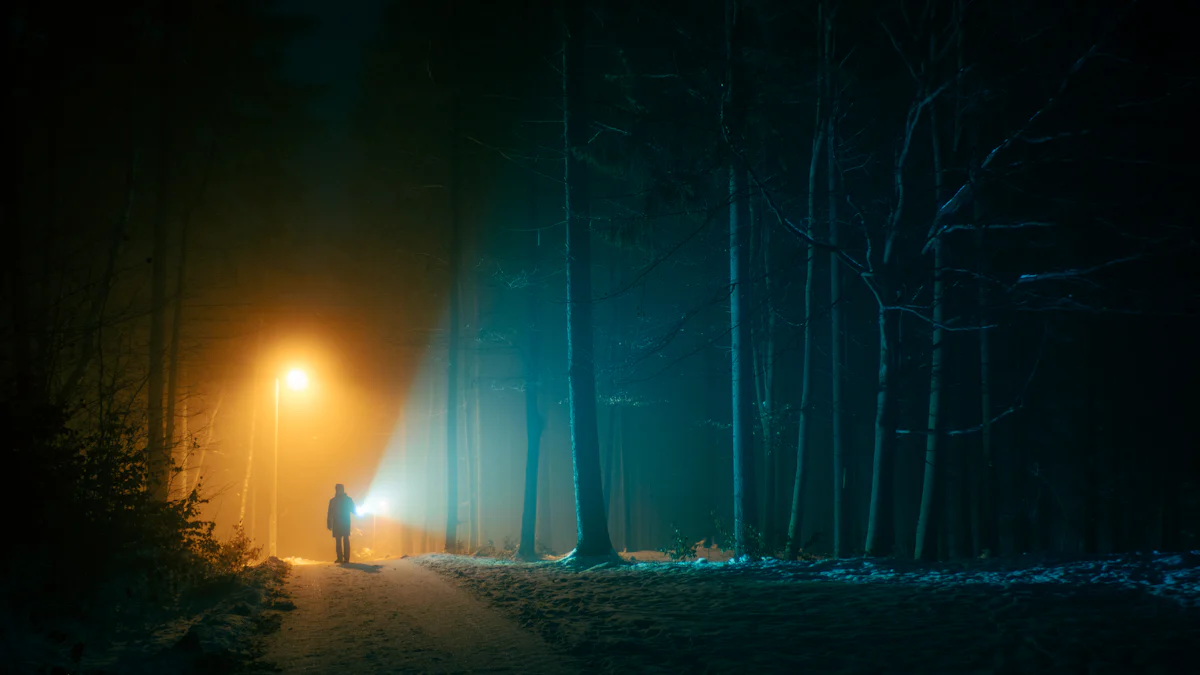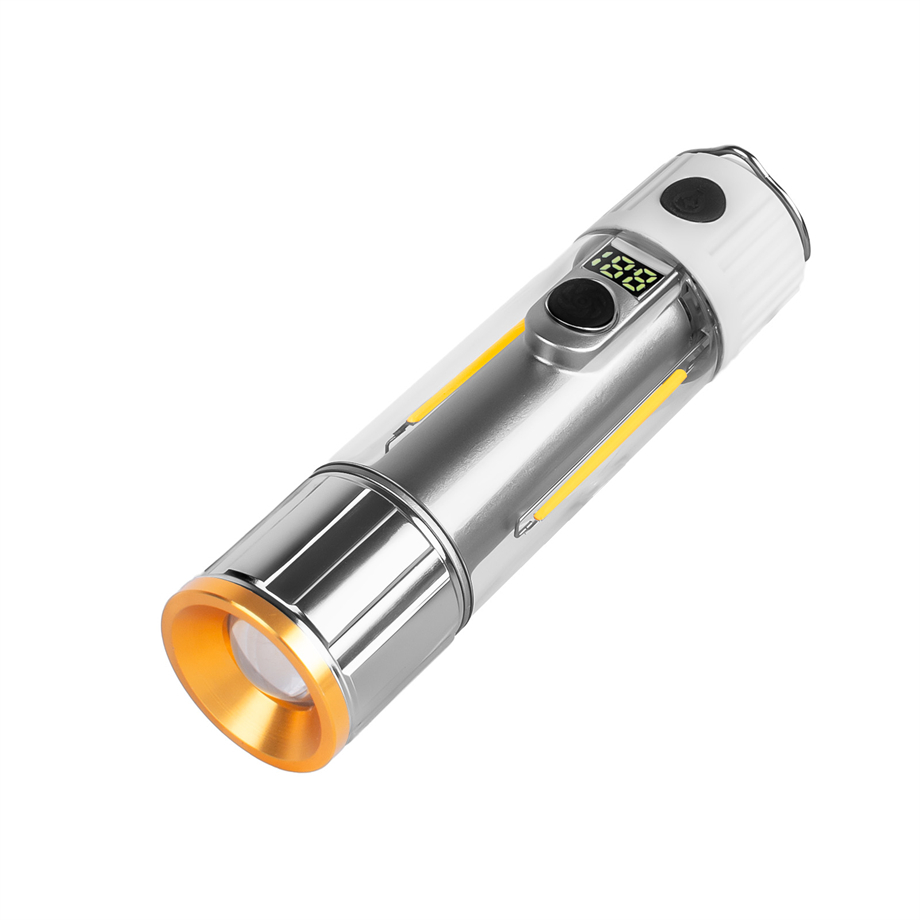Understanding Flashlight Safety Regulations for Outdoor Gear Retailers

Understanding flashlight safety regulations for outdoor gear retailers is crucial. These regulations directly impact your business operations and customer safety. Non-compliance can lead to significant financial penalties and product withdrawals, affecting your business. Moreover, customer safety is compromised, leading to potential harm and loss of trust. You must ensure certification by IEC and UL to avoid penalties and guarantee product safety. Compliance with NEC hazardous location classifications protects customers from potential hazards. By adhering to these standards, you safeguard your business and enhance customer confidence.
Key Takeaways
Knowing flashlight safety rules helps keep your business safe.
Following rules like UL and IEC avoids fines and boosts your brand.
Safe flashlights are key in risky places to stop fires and keep workers safe.
Good paperwork and checks show you care about safety and follow rules.
Teaching customers about TSA rules for flashlights on planes makes travel better and shows you know your stuff.
Understanding Flashlight Safety Regulations
Definition and Scope
Key components of safety regulations
Understanding flashlight safety regulations for outdoor gear retailers involves knowing the key components that ensure product reliability and consumer protection. These components include performance criteria, testing procedures, and a ratification process. Here's a breakdown:
Component | Description |
|---|---|
Performance Criteria | Defined measures for flashlight performance |
Testing Procedures | Specified methods for evaluating flashlight performance |
Ratification Process | Involves manufacturers, users, and general interests to ensure balanced representation |
These elements ensure that flashlights meet the necessary standards for safe use. By adhering to these components, you can guarantee that your products are reliable and safe for consumers.
Importance for consumer protection
Safety regulations play a crucial role in protecting consumers. They ensure that flashlights perform as expected and do not pose any hazards. Compliance with these standards helps prevent accidents and injuries, fostering trust between you and your customers. When you prioritize safety, you demonstrate a commitment to consumer well-being.
Why They Matter for Retailers
Legal and financial implications
For retailers, understanding flashlight safety regulations is essential to avoid legal and financial repercussions. Non-compliance can lead to severe consequences. For instance, Sarah, a small manufacturing company owner, faced a lawsuit due to unsafe working conditions, resulting in over $60,000 in legal fees and damages. Similarly, Mary, a bakery owner, experienced a temporary shutdown due to safety violations, leading to significant revenue loss. These examples highlight the importance of adhering to safety standards to protect your business from similar risks.
Enhancing brand reputation
Complying with safety regulations not only protects your business legally but also enhances your brand reputation. When you offer flashlights that meet established standards, you build trust with your customers. They will appreciate your commitment to quality and safety, which can lead to increased customer loyalty and positive word-of-mouth. By prioritizing safety, you position your brand as a reliable and responsible retailer in the outdoor gear market.
Key Safety Standards and Regulations
UL Standards
Overview of UL certification
Understanding UL certification is crucial for ensuring that your flashlights meet global safety standards. UL 1576 and UL 913 are key standards relevant to flashlight safety. UL 1576 applies to battery-powered flashlights and lanterns, ensuring they operate safely up to 75 V d.c. UL 913 covers intrinsically safe flashlights for hazardous locations, such as Class I, II, and III, Division 1 environments. These standards ensure your products are safe and reliable.
Standard | Description |
|---|---|
UL 1576 | Applies to flashlights and lanterns powered by rechargeable and non-rechargeable batteries up to 75 V d.c. |
UL 913 | Covers intrinsically safe flashlights for use in hazardous locations (Class I, II, III, Division 1). |
Benefits of UL compliance
UL certification offers several benefits for outdoor gear retailers. It involves comprehensive testing for safety and durability, ensuring you can offer high-quality products. Regular unannounced visits by UL representatives verify ongoing compliance, maintaining consumer trust. UL's reputation enhances your product credibility, as consumers trust recognized certifications. This reliability can lead to increased sales and customer loyalty.
Benefit | Description |
|---|---|
Stricter requirements for certification | UL certification involves comprehensive testing for safety and durability, ensuring that outdoor gear retailers can offer high-quality products to consumers. |
Ongoing third-party safety verification | Regular unannounced visits by UL representatives ensure that products consistently meet safety standards, which is crucial for retailers to maintain consumer trust. |
Superior track record | UL's long-standing reputation enhances the credibility of products sold by outdoor gear retailers, as consumers are more likely to trust products with a recognized certification. |
Reliability and consistency | As a nonprofit dedicated to consumer safety, UL certification provides outdoor gear retailers with assurance that their products are consistently safe and reliable, which can lead to increased sales and customer loyalty. |
ATEX Regulations
Understanding ATEX for explosive environments
ATEX regulations are vital for ensuring safety in explosive environments. They define strict guidelines for controlling and mitigating explosive atmospheres, ensuring that equipment, including flashlights, can safely operate in hazardous conditions. These regulations apply to industries like chemical and petrochemical sectors, where flammable substances are present.
Relevance to outdoor gear
For outdoor gear retailers, ATEX certification ensures your flashlights meet international safety standards. This is essential for protecting employees and preventing accidents in environments with explosion risks, such as oil and gas refineries. By offering ATEX-certified flashlights, you demonstrate a commitment to safety and compliance with global safety standards.
IECEx Standards
Global standards for explosive atmospheres
IECEx standards provide a framework for ensuring safety in explosive atmospheres. These global safety standards apply to various industries, ensuring equipment operates safely in hazardous environments. For flashlight manufacturers, adhering to IECEx standards is crucial for producing reliable and safe products.
Application in flashlight manufacturing
In flashlight manufacturing, IECEx standards ensure your products are suitable for use in hazardous locations. For example, models like the DS-19 Penlight and DS-3 Flashlight comply with Division 1 and Zone 0 standards, making them ideal for oil and gas fields or underwater use. By adhering to these standards, you ensure your flashlights meet global safety standards and are suitable for various environments.
Flashlight Model | Compliance Features | Suitable Environments |
|---|---|---|
DS-19 Penlight | Div 1 & Zone 0, IP67 | Oil & gas fields, mines |
Class I Headlamp | Intrinsically Safe, durable | Oil & gas fields, firefighting |
DS-3 Flashlight | Div 1 & Zone 0, IP67 | Hazardous locations, underwater use |
ANSI/NEMA FL1 Standards
Understanding ANSI/NEMA FL1 standards is crucial for ensuring your flashlights meet consistent testing and rating criteria. These standards provide a reliable framework for measuring flashlight performance, allowing you to compare products from different manufacturers directly. Here’s how they ensure consistency:
They define specific ratings such as Light Output (Lumen), Peak Beam Intensity (Candela), Beam Distance (Meter), Runtime (Hours), Water Resistance (IPX Rating), and Impact Resistance (Meter).
By adhering to these standards, you can confidently assess the quality and performance of your flashlights.
These standards help you maintain a high level of product safety and reliability. When you follow ANSI/NEMA FL1 standards, you ensure that your flashlights perform as expected under various conditions. This consistency builds trust with your customers, who rely on accurate information when choosing the right flashlight for their needs.
Communicating product safety effectively is another critical aspect of these standards. You must clearly convey the safety features and performance metrics of your flashlights to your customers. Use the standardized ratings to provide transparent and easy-to-understand information. This approach not only helps customers make informed decisions but also enhances your brand's reputation for reliability and safety.
By prioritizing ANSI/NEMA FL1 standards, you demonstrate a commitment to quality and safety. This commitment not only protects your customers but also strengthens your position in the competitive outdoor gear market. As you continue to offer flashlights that meet these rigorous standards, you build a loyal customer base that values your dedication to excellence.
Impact on Outdoor Gear Retailers
Compliance Requirements
Steps to ensure compliance
Understanding flashlight safety regulations for outdoor gear retailers is crucial for maintaining compliance. You must ensure your camping flashlight products meet certification standards set by IEC and UL. These standards guarantee safety in hazardous environments. Additionally, compliance with hazardous location classifications defined by NEC is essential. Your flashlights should operate safely in areas with flammable materials. Implementing quality assurance processes is vital. Manufacturers must conduct rigorous testing and hands-on experience to ensure products meet safety standards.
Compliance Requirement | Description |
|---|---|
Certification Standards | Flashlights must meet standards set by IEC and UL to ensure safety in hazardous environments. |
Compliance with Hazardous Location Classifications | Flashlights must be designed to operate safely in areas classified by NEC based on flammable materials. |
Quality Assurance | Manufacturers must implement quality control processes to ensure products meet safety standards. |
Documentation and record-keeping
Proper documentation and record-keeping are essential for compliance. You should maintain detailed records of all safety-certified products, including testing results and certifications. Regular reviews of these documents ensure ongoing compliance and help you address any issues promptly. By keeping thorough records, you demonstrate a commitment to safety and quality.
Penalties for Non-Compliance
Financial penalties
Non-compliance with flashlight safety regulations can lead to significant financial penalties. Fines can be substantial, impacting your bottom line. You may also face costs related to product recalls and legal fees. These financial burdens can be avoided by adhering to safety standards and maintaining compliance.
Legal consequences
Legal consequences of non-compliance can be severe. You may face lawsuits from customers or regulatory bodies. These legal battles can damage your reputation and lead to further financial losses. By ensuring compliance, you protect your business from these risks and maintain a positive brand image.
Case Study: Successful Navigation of Regulations
Example of a compliant retailer
Consider a retailer who successfully navigated flashlight safety regulations. This retailer prioritized compliance with IEC and UL standards, ensuring their camping flashlight products were safety-certified. They also adhered to NEC classifications, guaranteeing safe operation in hazardous environments.
Lessons learned and best practices
From this example, you can learn valuable lessons. Compliance with certification standards ensures safety in hazardous environments. Understanding and adhering to NEC classifications is crucial. Implementing rigorous quality control processes maintains safety standards. By following these best practices, you can offer reliable outdoor gear and build a strong reputation in the market.
Certification Standards: Compliance with standards set by bodies like IEC and UL ensures safety in hazardous environments.
Hazardous Location Classifications: Understanding and adhering to classifications defined by NEC is crucial for safe operation.
Quality Assurance: Implementing rigorous quality control processes is essential for maintaining safety standards.
Intrinsically Safe Flashlights

Importance in Hazardous Environments
Intrinsically safe flashlights play a crucial role in ensuring safety in hazardous environments. These flashlights are designed to prevent accidental ignition, significantly reducing the risk of igniting flammable materials. They are essential for compliance, as many industries mandate the use of intrinsically safe equipment in specific areas. Their robust design ensures reliability, providing consistent illumination even in harsh conditions.
Safety: They significantly reduce the risk of igniting flammable materials, ensuring the safety of workers and the environment.
Compliance: Many industries require the use of intrinsically safe equipment in certain areas, making these flashlights a necessity for regulatory compliance.
Reliability: Their robust design ensures they can withstand harsh conditions, providing reliable illumination when needed most.
A case study from the oil and gas industry highlights the importance of using intrinsically safe flashlights. In one incident, a worker using a regular flashlight in a confined space with flammable gases caused an explosion. The investigation revealed that the flashlight’s switch sparked the explosion. If they had used an intrinsically safe flashlight, they could have avoided the incident.
Design features and safety
Intrinsically safe flashlights incorporate several design features to ensure safety in hazardous environments. They use a specific battery type that minimizes the risk of sparks. The flashlights also feature water resistance, which enhances their durability and reliability. These features make them ideal for use in confined spaces where visibility is crucial.
They prevent accidental ignition: Intrinsically safe flashlights are designed to operate without producing sparks, thus reducing the risk of accidental ignition.
They provide reliable illumination: These flashlights offer consistent and reliable lighting, which is crucial for visibility in confined spaces.
They are durable: Intrinsically safe flashlights are built to withstand harsh conditions, making them ideal for use in confined spaces.
Retailer considerations
As a retailer, you must consider several factors when offering intrinsically safe flashlights. Ensure that the flashlights you stock meet industry standards for intrinsically safe equipment. Pay attention to the battery type and water resistance features, as these are critical for safety in hazardous environments. By providing high-quality intrinsically safe flashlights, you enhance your reputation and ensure customer safety.
Flashlights Allowed on Planes

Regulations and Guidelines
When traveling by air, understanding the TSA regulations for flashlights is essential. You can carry flashlights in both carry-on and checked baggage, but specific rules apply. Flashlights under seven inches are acceptable in carry-on luggage, while larger ones must be checked. If your flashlight has glass-breaking or self-defense features, pack it in checked luggage to avoid confiscation.
Note: Lithium-ion batteries must be in carry-on baggage. Ensure they have a watt-hour rating under 100 to comply with TSA guidelines.
Types of Flashlights Permitted
The TSA allows various types of flashlights on planes, provided they adhere to certain conditions. Flashlights under seven inches can be carried in either type of luggage. Larger flashlights, however, must be packed in checked baggage. If your flashlight has sharp points or aggressive bezels, it may be viewed as a weapon and should be checked. Always carry lithium batteries in your hand luggage, as loose batteries are prohibited in checked baggage.
Advising Customers
As a retailer, you play a crucial role in advising customers about TSA regulations for flashlights. Inform them that flashlights are allowed in both carry-on and checked baggage, but they must follow specific rules. Emphasize that flashlights under seven inches can be carried in either type of bag, while larger ones must be checked. Advise customers to pack flashlights with sharp points in checked luggage. Remind them that lithium batteries must be carried in carry-on baggage and should have a watt-hour rating under 100.
Tip: Providing clear guidance on TSA regulations helps customers travel smoothly and enhances your reputation as a knowledgeable retailer.
Understanding and complying with flashlight safety regulations is crucial for your business. Compliance enhances productivity, improves safety, and boosts your reputation. Adequate lighting creates a comfortable environment, leading to better mood and job satisfaction. Proper illumination helps employees see their work and surroundings, reducing mistakes and enhancing awareness of hazards. A good safety record attracts customers and partners. Stay informed and proactive to ensure your business thrives in today's competitive market.
Benefit | Description |
|---|---|
Increased Productivity | Adequate lighting creates a comfortable environment, leading to better mood and job satisfaction, which boosts productivity and profitability. |
Improved Safety | Proper illumination helps employees see their work and surroundings, reducing mistakes and enhancing awareness of hazards. |
Better Reputation | A good safety record attracts customers and partners, as safety compliance is highly valued in business today. |
FAQ
What are the key safety standards for flashlights?
You should focus on UL, ATEX, IECEx, and ANSI/NEMA FL1 standards. These ensure your flashlights meet global safety requirements, making them reliable and safe for consumers.
How can retailers ensure compliance with safety regulations?
You must implement quality assurance processes, maintain proper documentation, and adhere to certification standards like IEC and UL. Regular reviews help ensure ongoing compliance.
Why is UL certification important for flashlights?
UL certification guarantees that your flashlights have undergone rigorous testing for safety and durability. This enhances product credibility and consumer trust.
What should you consider when selling intrinsically safe flashlights?
Ensure they meet industry standards, focus on battery type and water resistance, and highlight their importance in hazardous environments to your customers.
Can you carry flashlights on planes?
Yes, you can carry flashlights in both carry-on and checked baggage. However, flashlights over seven inches or with sharp features should be checked. Lithium batteries must be in carry-on luggage.
See Also
Enhance Your Outdoor Safety Using Mini Pocket Flashlights
Ultimate Resource for EDC Flashlights in Wholesale Sector
Guidelines for Finding Dependable Wholesale Flashlights
Locating Top Wholesale Flashlight Suppliers for Camping Stores
